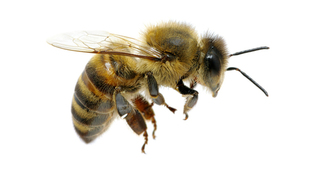 loading
loading
FindingsNoted ShutterstockView full imageA bee sting might be good news—for some of us. In the November 14 issue of Immunity, immunobiologist Ruslan Medzhitov and his colleagues showed that in mice, at least, phospholipase A2, the cell membrane–destroying component of bee venom, induces an allergic reaction that turns on the immune system and confers protection against further stings. Humans probably have a similar mechanism; but, for unknown reasons, the system occasionally overreacts, leading to anaphylactic shock. “There is a very thin line between protective and potentially life-threatening allergic reactions to bee venom,” Medzhitov explained.
 ShutterstockView full imageHuman infants are apparently hardwired to avoid touching plants—perhaps a defense mechanism against poisoning. Psychologists Karen Wynn and Annie E. Wertz presented 47 youngsters between 8 and 18 months old with real and artificial plants, as well as “novel artifacts”—clearly not plants, but with plant-like characteristics. On average, the babies grabbed the “artifacts” twice as fast as the real or artificial plants—about 4 seconds versus 9—the researchers report in the January issue of Cognition. No word on how to get kids to eat their vegetables.
In a study of murders in a rough part of Chicago, sociologists Andrew Papachristos and Christopher Wildeman found that being in the same social network as a homicide victim led to a ninefold increase in the risk of suffering a similar fate. But the research, in the online American Journal of Public Health, revealed a possible intervention strategy: each step removed from the network resulted in a “57 percent decrease in the odds of victimization.”
The comment period has expired.
|
|